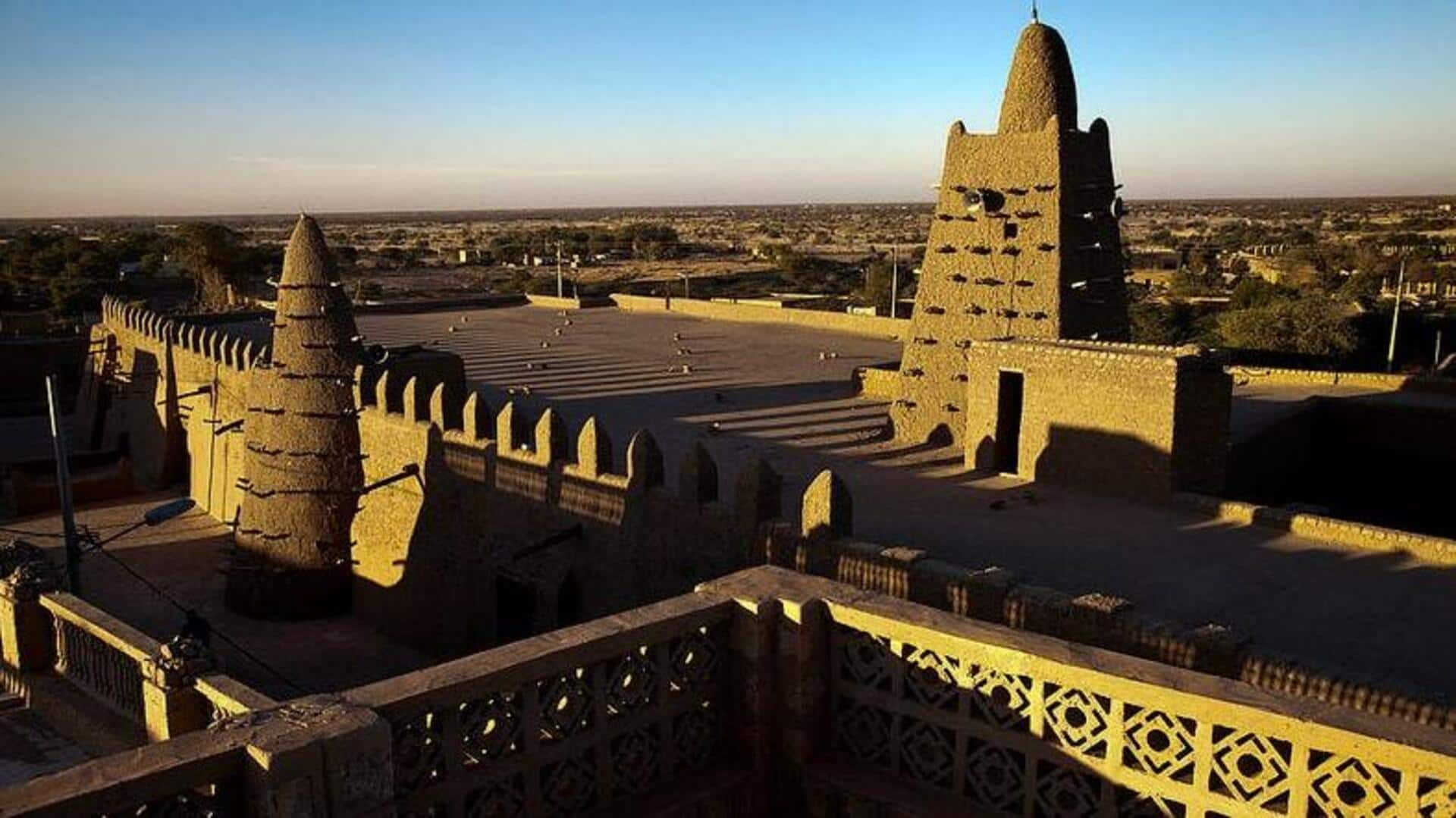
A travel guide to exploring the best of Timbuktu, Mali
What's the story
Timbuktu, a city shrouded in mystery and steeped in history, sits on the southern edge of the Sahara Desert in Mali. Once a bustling hub for trade and Islamic scholarship, this ancient city is now a UNESCO World Heritage site. Visitors can explore its mosques, libraries filled with centuries-old manuscripts, and the unique architecture that tells tales of its glorious past.
Mosques
Explore the ancient mosques
Timbuktu is home to three iconic mud-brick mosques: Djinguereber, Sankore, and Sidi Yahya. Built in the 14th and 15th centuries, these structures are not only places of worship but also historical landmarks that have withstood the test of time. Tourists can admire their distinctive Saharan architecture and learn about their role in Timbuktu's golden age as an Islamic learning center.
Manuscripts
Discover manuscripts at Ahmed Baba Institute
The Ahmed Baba Institute is a treasure trove, housing over 20,000 manuscripts with some dating back to the 13th century. These ancient texts span a variety of subjects, including mathematics, astronomy, medicine, and Islamic law. Visitors have the unique opportunity to view these documents up close, gaining insight into their importance in preserving African heritage and their contribution to global knowledge during medieval times.
Markets
Wander through Timbuktu's markets
A visit to Timbuktu is incomplete without exploring its vibrant markets. Here, you can immerse yourself in local culture by browsing stalls selling traditional Malian crafts. These include Tuareg jewelry, leather goods, and handwoven textiles. It's a perfect opportunity for visitors to interact with locals and buy souvenirs that support the community. This offers a glimpse into Mali's artisanal heritage.
Desert safari
Experience desert life on a camel safari
For those seeking adventure beyond the city, a camel safari into the Sahara offers an unforgettable experience. Guided tours take travelers across vast dunes to witness breathtaking sunsets and camp under the starlit skies. This journey not only provides insight into the nomadic lifestyles but also showcases the desert's stark beauty, making it a memorable part of visiting Timbuktu.